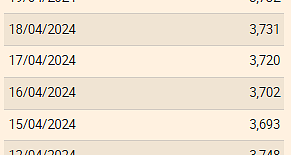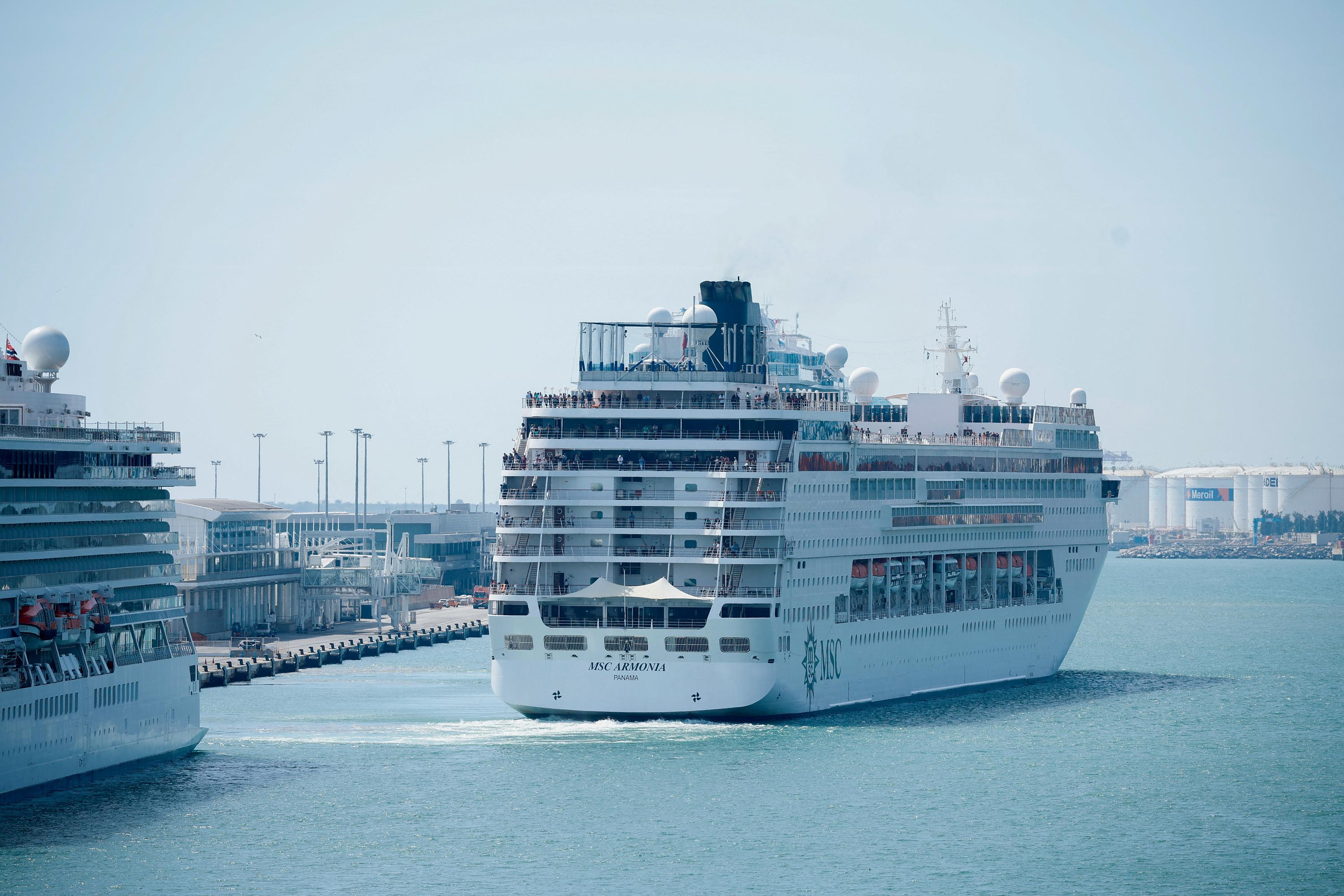the natural fiber, mainly cotton, clothes made of consumers are interested more.
Interest grows out of Contempt for five different special - and retail for doing the survey, which examined how clothing materials affect their sales.
Cotton manufactured clothes sales growth of the tell survey respondents Kesko, it consists of and Lindex.
Baby and children's clothes in particular organic cotton. For example, we have all the baby clothes made of organic cotton. Children's clothes in organic cotton the proportion is 80%.
Also, Kesko has been noted that consumers ' interest in organic cotton has been focused on the first baby and children's clothing.
in addition to Its popularity in the is especially underwear and socks used in bamboo viscose.
lindex in the most commonly used natural fiber is cotton. In addition the material used is wool and wood-based lyocellia and viscose. Sami Jacket / YleTokmannilla natural fibers demand has been answered by adding organic cotton, the share of, inter alia, children's clothes and adult underwear.
the S-group does not recognize the natural fibers of the popularity growth. The attention is justified by the fact that cotton-based clothing share has been range always great.
As well Texmoda cooperative Moda-shops had not been noticed by a more specific interest in growing natural fibers to the point. The sale has always been, for example, woollen men's suits and knitwear. Instead, customers interested in accountability.
– Nykykuluttajaa more interested in product accountability than the garment material, tell Texmoda cooperative ceo Beni Kauhanen .
"If I was rich, wraps I must beg silks, linen and good quality villa"artificial fibers to avoid for various reasons. More and more wondering how much fabric formation to consume the earth's resources, increases climate change, and how much material comes off of micro plastic.
kuopio professional Jaana Iso-Ahola is bought always natural fiber clothes. One reason for this is simply that natural fiber feels good on the skin.
Iso-Ahola very familiar with the Kuopio center of the clothing supply. He told me that still affordable natural fiber clothes had to go looking for them. Most of the clothes are of man-made fibres or sekotteita, i.e. the fabric is made of natural and synthetic fibers.
of Course, if I was rich, wraps I must beg silks, linen and good quality wool, Iso-Ahola says with a laugh.
Also the quality of the fiber means a lot valveutuneelle to the consumer. Natural fibers is of poor quality. The classic example of this is the cheap t-shirt that loses its shape quickly.
Iso-Ahola's note, however, that the fibers have evolved for the better. It shows, among other things, that the clothes can withstand more washing than in the past.
Jaana Iso-Ahola believes that the biggest waste is that, if clothes are used only once or twice. “It goes to the material and work, as well as the buyer's money of course.”Sami Jacket / YleAlso the new pulp-based wood fibers kiinnnosta way, Iso-ahola of.
– I Believe that it is possible to get a range of new sustainably produced fibers.
Iso-Ahola I hope that they will get rid of the traditional natural fibres versus man-made fibres -thinking.
Accountability of the weigh scales in the mostAt the moment the situation of consumers, however, is that more than natural fibers consumers interested in products accountability.
This is noticed also in the S-group, which will move to use only responsible cotton own merkeissään and group themselves import most of the clothes. The change occurs gradually by the year 2025.
Responsible cotton is organic, recycled or fair trade, for example cotton.
Also Tokmannilla this is a timely issue. It consists of makes the larger lines of responsible cotton use again next year.
– in Addition, we see as an important cotton alternative, sustainable materials development and we follow these developments closely, says it consists of the style of dress purchasing group manager Timo Faggots .
Read more:
Pupulandia-blog Jenni Rotonen: "Accountability, quality and cheap don't come in the same package" – Is a responsible clothing difficult to identify?
fast fashion addictive and is housebroken way to manage emotions – Professor: It compare to fast food and disposable culture
the Finns like to market the clothes in the ownership – but that's not the only reason, why the clothing pawnshop has not become a bigger trend
Subscribe Yle newsletters!Get Overeating the best content straight to your inbox! Order as many letters as you want!
Proceed to order
 The Euribor today remains at 3.734%
The Euribor today remains at 3.734% Germany: the trial of an AfD leader, accused of chanting a Nazi slogan, resumes this Tuesday
Germany: the trial of an AfD leader, accused of chanting a Nazi slogan, resumes this Tuesday New York: at Columbia University, the anti-Semitic drift of pro-Palestinian demonstrations
New York: at Columbia University, the anti-Semitic drift of pro-Palestinian demonstrations What is Akila, the mission in which the Charles de Gaulle is participating under NATO command?
What is Akila, the mission in which the Charles de Gaulle is participating under NATO command? What High Blood Pressure Does to Your Body (And Why It Should Be Treated)
What High Blood Pressure Does to Your Body (And Why It Should Be Treated) Vaccination in France has progressed in 2023, rejoices Public Health France
Vaccination in France has progressed in 2023, rejoices Public Health France Food additives suspected of promoting cardiovascular diseases
Food additives suspected of promoting cardiovascular diseases “Even morphine doesn’t work”: Léane, 17, victim of the adverse effects of an antibiotic
“Even morphine doesn’t work”: Léane, 17, victim of the adverse effects of an antibiotic MEPs validate reform of EU budgetary rules
MEPs validate reform of EU budgetary rules “Public Transport Paris 2024”, the application for Olympic Games spectators, is available
“Public Transport Paris 2024”, the application for Olympic Games spectators, is available Spotify goes green in the first quarter and sees its number of paying subscribers increase
Spotify goes green in the first quarter and sees its number of paying subscribers increase Xavier Niel finalizes the sale of his shares in the Le Monde group to an independent fund
Xavier Niel finalizes the sale of his shares in the Le Monde group to an independent fund Owner of Blondie and Shakira catalogs in favor of $1.5 billion offer
Owner of Blondie and Shakira catalogs in favor of $1.5 billion offer Cher et Ozzy Osbourne rejoignent le Rock and Roll Hall of Fame
Cher et Ozzy Osbourne rejoignent le Rock and Roll Hall of Fame Three months before the Olympic Games, festivals and concert halls fear paying the price
Three months before the Olympic Games, festivals and concert halls fear paying the price With Brigitte Macron, Aya Nakamura sows new clues about her participation in the Olympics
With Brigitte Macron, Aya Nakamura sows new clues about her participation in the Olympics Skoda Kodiaq 2024: a 'beast' plug-in hybrid SUV
Skoda Kodiaq 2024: a 'beast' plug-in hybrid SUV Tesla launches a new Model Y with 600 km of autonomy at a "more accessible price"
Tesla launches a new Model Y with 600 km of autonomy at a "more accessible price" The 10 best-selling cars in March 2024 in Spain: sales fall due to Easter
The 10 best-selling cars in March 2024 in Spain: sales fall due to Easter A private jet company buys more than 100 flying cars
A private jet company buys more than 100 flying cars This is how housing prices have changed in Spain in the last decade
This is how housing prices have changed in Spain in the last decade The home mortgage firm drops 10% in January and interest soars to 3.46%
The home mortgage firm drops 10% in January and interest soars to 3.46% The jewel of the Rocío de Nagüeles urbanization: a dream villa in Marbella
The jewel of the Rocío de Nagüeles urbanization: a dream villa in Marbella Rental prices grow by 7.3% in February: where does it go up and where does it go down?
Rental prices grow by 7.3% in February: where does it go up and where does it go down? Europeans: “All those who claim that we don’t need Europe are liars”, criticizes Bayrou
Europeans: “All those who claim that we don’t need Europe are liars”, criticizes Bayrou With the promise of a “real burst of authority”, Gabriel Attal provokes the ire of the opposition
With the promise of a “real burst of authority”, Gabriel Attal provokes the ire of the opposition Europeans: the schedule of debates to follow between now and June 9
Europeans: the schedule of debates to follow between now and June 9 Europeans: “In France, there is a left and there is a right,” assures Bellamy
Europeans: “In France, there is a left and there is a right,” assures Bellamy These French cities that will boycott the World Cup in Qatar
These French cities that will boycott the World Cup in Qatar Serie A: Bologna surprises AS Rome in the race for the C1
Serie A: Bologna surprises AS Rome in the race for the C1 Serie A: Marcus Thuram king of Italy, end of the debate for the position of number 9 with the Blues?
Serie A: Marcus Thuram king of Italy, end of the debate for the position of number 9 with the Blues? Milan AC-Inter Milan: Thuram and Pavard impeccable, Hernandez helpless… The tops and flops of the derby
Milan AC-Inter Milan: Thuram and Pavard impeccable, Hernandez helpless… The tops and flops of the derby Ligue 2: Auxerre leader, Bordeaux in crisis, play-offs... 5 questions about an exciting end of the season
Ligue 2: Auxerre leader, Bordeaux in crisis, play-offs... 5 questions about an exciting end of the season


















